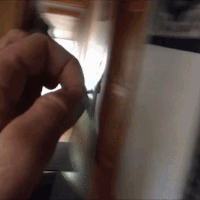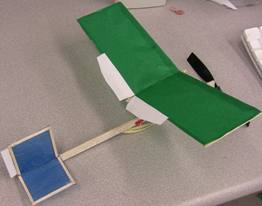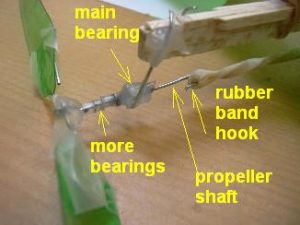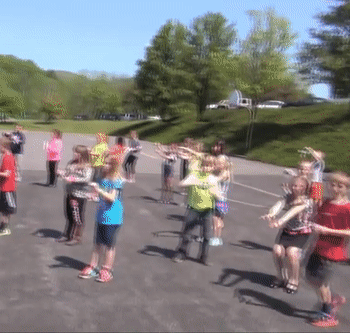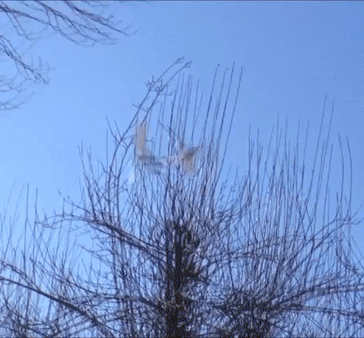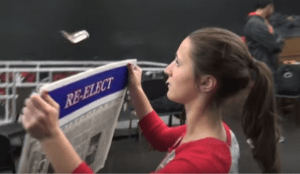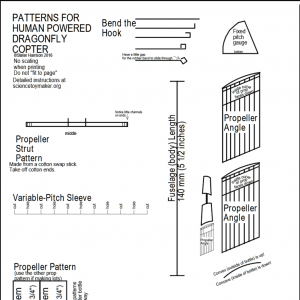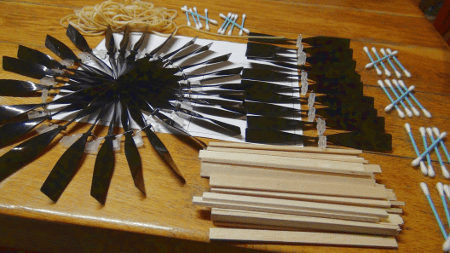So you’ve made a dragonfly helicopter and now you want to make it into an airplane. I get it. If you can make a good flying airplane from straws, paper clips and an old bottle, is there anything you can’t do? But let’s be clear: getting stable flight from the helicopter is pretty easy. Getting stable flight from an airplane is more challenging. More things can go wrong.
But struggling is a really good way to learn stuff. And the strategies here are good for other flying model plane projects - Slater, the SciencetoyMaker
Full Transcript
Hi it’s Slater
So you’ve made a dragonfly helicopter and now you want to make it into an airplane. I get it. If you can make a good flying airplane from straws, paper clips and an old bottle, is there anything you can’t do? But let’s be clear: getting stable flight from the helicopter is pretty easy. Getting stable flight from an airplane is more challenging. More things can go wrong.
But struggling is a really good way to learn stuff.
And the strategies here are good for other flying model plane projects
I’m assuming you’ve made a working dragonfly helicopter. That’s where we start from.
Print out the pattern, no scaling unless it’s 100%, no fit to page.
Let’s match the wing to the propeller—we’ll make it big-- or the plane will roll over from propeller torque. We need 6 rectangles from 3 foam plates. [[It’s heavier than balsa and tissue paper, but stronger too. While cut pattern]] Get the pattern centered and tape. If we fold in the middle to know where to cut, we can reuse the pattern.
Bending in camber, or curve for all 4 wing sections makes an efficient, airfoil shape. I bend about the front 25% of a long side of a rectangle. It’s hard. The best way I found was to make little bends with a ruler, then bending with fingers and rolling with a pen. But use whatever method works to make it look like this.
To make the flat middle section, hold 2 short ends together and tape top and bottom so it stays flat. But for the two wing sections at the end, we’re going to make them slant up, called dihedral. [[Cut out the angle pattern and apply it to the bottom of the wing.]] That prevents roll and stabilizes the plane. So for these end sections, only tape the top. Notice how the wing hinges. The angle pattern tells how much to bend and filling in with a little hot glue makes it stronger. Only then do I put tape on the bottom.
It’s tempting to just hold the wings in between straws, and I’ve tried it. But the old trick of hanging the fuselage well below the wings is yet another way to gain flight stability—worth the extra hassle in my opinion. Punch 4 holes and put the thin ends of toothpicks in. It’s best if the flat side is parallel to the center line. Then hold them in with a thin layer of glue, top and bottom. If it’s not quite right, you can reheat the hot glue and reposition.
The last two foam rectangles make the tail section. Cut the vertical part to a square. Find the middle of the other piece. Glue and tape to the middle.
Strengthen the bendy part of a straw with some tape. Flatten that end and tape to the tail section. Let’s cut a little off the tail starting in the middle. Two cuts allow you to telescope into the fuselage. Push pretty firmly so it stays in. [[aligned to wing?]]
Usually we obsessively reduce weight in planes. But there are two places where weight helps flight stability—in the very front and as low as possible. So landing gear, made from small paper clips--does double duty. When you test fly the plane and this is happening—severe stalling—adding front weight is one way to correct it. I’m using 4 paper clips for this landing gear; and I’ll probably add two more if it keeps stalling. Glue it on securely.
Something is wrong here—can you see it? [[wing is on backward]] The wing goes on with tape, so we can adjust it. And I did have to move the wing more toward the back of the plane after the first test flight. But first, here I taped the wing on about the middle of the fuselage. I could use a third hand. The front toothpick does not go below the fuselage bottom. But the back does go a little lower than the front because—you guessed it—better flying. This gives the front of the wing a very slight upward angle, called angle of attack.
The tail should straight and lined up with the wing, at least at first. It looks a little crooked here. Try to get it straight. Let’s snip off the vertical tail like a real plane.
I think we’re ready to fly. Make sure you wind it up enough.
The first time I flew this plane, is stalled. Sometimes people confuse stalling with diving—which comes after a stall; but if it stalls first, it’s a stall. Sometimes, if there’s enough altitude, it will recover and stall again.
I added some front weight to the front to counter the stall, but it still stalled.
That does it: I’m moving the wing all the way back. Beside adding weight to the front, moving the wing more toward the back is another good way to stop stalling. And this time it works—no stalling!
If the plane started diving or not gaining enough altitude, I would have moved the wing more forward and/or taken off some weight.
Oops, now it’s in a tree. It’s always something.
I’ve heard that a model plane should have about the same amount of weight in front as there is behind if you lift here. It’s a point about a third of the way from the front of the wing, where most lift occurs. I pick it up by paper clips, and sure enough it balances horizontally. Can you see how either moving the wing forward or backward, or adding or removing weight would change this balance point?
Real airplanes have lots of control surfaces, but that’s beyond the scope of this video. I’m just tickled that it flies this well. I’d love to hear how it went for you. What worked and what didn’t? If you had trouble, what fixed it?

